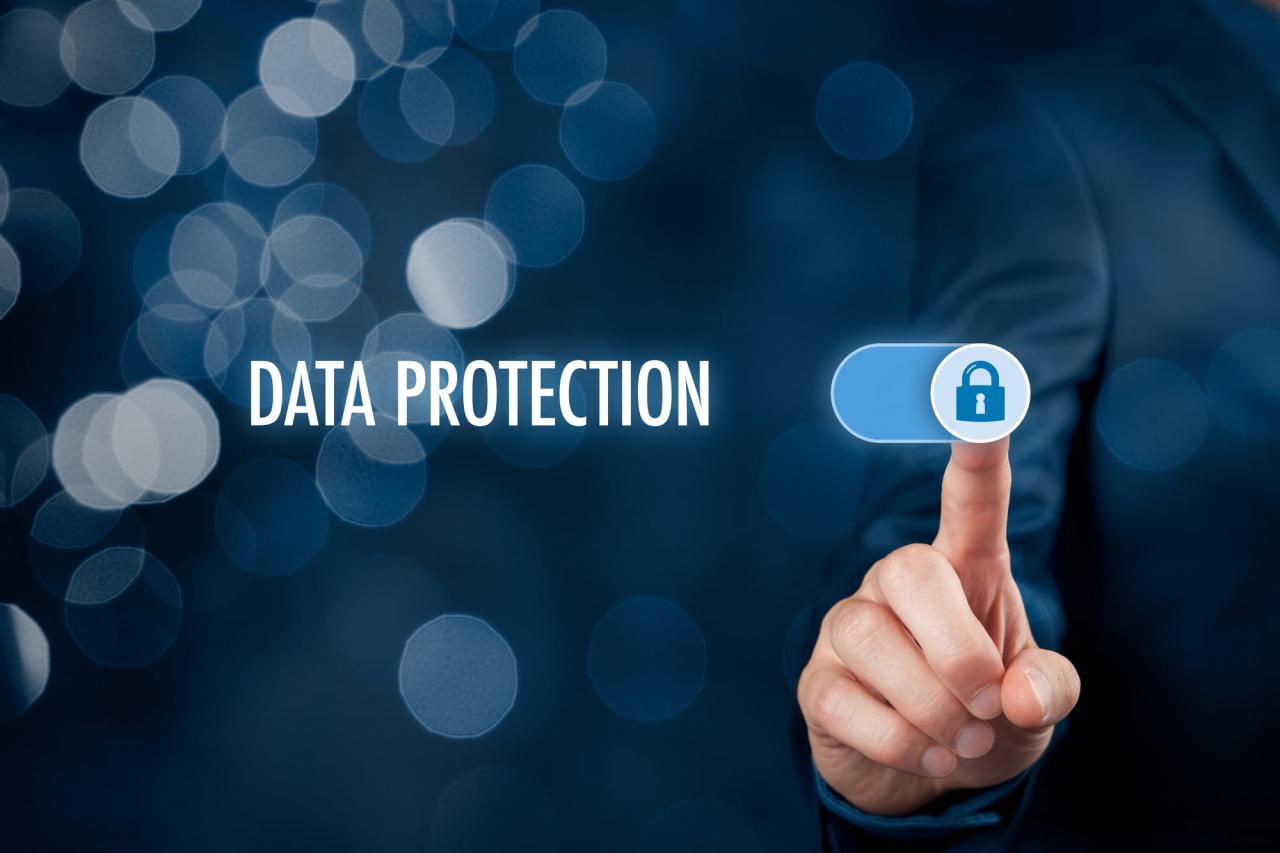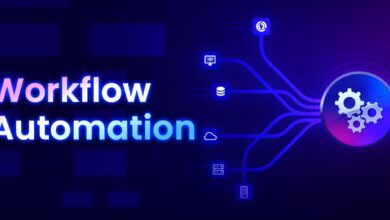Essential Strategies for Robust Cloud Data Security

The shift to cloud computing has revolutionized how businesses and individuals store, process, and access information.
Services like Amazon Web Services (AWS), Microsoft Azure, and Google Cloud Platform (GCP), alongside popular personal platforms like Dropbox and OneDrive, offer unparalleled scalability and accessibility. Yet, this convenience comes with a critical caveat: security.
Moving data outside the physical confines of your office or home transfers some security responsibilities to the cloud provider, but crucially, it doesn’t eliminate yours. This shared responsibility model is the cornerstone of cloud data protection.
Simply put, while the cloud provider manages the security of the cloud (the infrastructure, hardware, and facilities), the user is responsible for the security in the cloud (your data, configurations, and user access). Failing to understand and implement this distinction is the single biggest contributor to data breaches in the cloud environment.
This comprehensive guide will explore the essential methods, best practices, and innovative strategies needed to create an ironclad defense for your valuable data residing in the digital ether. We’ll delve into everything from foundational access controls to cutting-edge encryption and governance policies.
Foundational Principles: The Shared Responsibility Model
![]()
Before implementing any technical controls, it is vital to grasp the concept of the shared responsibility model, which clarifies the division of labor between you and the cloud service provider (CSP).
A. Cloud Provider Responsibilities (Security of the Cloud):
A. The physical security of the data centers.
B. The underlying network infrastructure.
C. The host operating system and virtualization layer.
D. Patching and securing the physical servers and storage.
B. Customer Responsibilities (Security in the Cloud):
A. Data Security: Encrypting data both at rest and in transit.
B. Identity and Access Management (IAM): Configuring user permissions and roles.
C. Network Controls: Setting up virtual firewalls and network segmentation.
D. Configuration Management: Ensuring all services (e.g., storage buckets, virtual machines) are correctly configured without leaving default, insecure settings.
Understanding this division means recognizing that human error in configuration—your responsibility—is often the primary cause of cloud breaches, not a failure of the cloud provider’s infrastructure.
The Cornerstone of Defense: Identity and Access Management (IAM)
Access control is arguably the most critical aspect of cloud security. If unauthorized users can access your data, no amount of encryption will help.
A. Enforcing Least Privilege Access
The principle of Least Privilege dictates that users (and automated services) should only have the minimum permissions necessary to perform their required tasks, and nothing more. This dramatically limits the potential damage from a compromised account.
A. Role-Based Access Control (RBAC): Define specific roles (e.g., “Database Administrator,” “Auditor,” “Developer”) and assign permissions only to those roles. Avoid granting broad, catch-all permissions.
B. Just-In-Time (JIT) Access: Implement policies where high-level administrative access is temporary and must be requested and approved for a short window (e.g., 30 minutes) before automatically revoking. This prevents credentials from sitting dormant and vulnerable with elevated access.
C. Regular Audits: Periodically review all user and service accounts. De-provision access immediately when an employee leaves the organization or changes roles. “Orphaned” accounts with high privileges are prime targets for hackers.
B. Mandatory Multi-Factor Authentication (MFA)
MFA is non-negotiable in the cloud. A simple username and password are no longer adequate.
A. Ubiquitous MFA: Enforce MFA for all users, especially administrators and service accounts with broad access. This includes internal access and any external connections.
B. Strong MFA Methods: Utilize the strongest available MFA, such as hardware security keys (FIDO2/WebAuthn) or time-based one-time password (TOTP) authenticator apps. Avoid reliance on SMS-based MFA, which is susceptible to SIM-swapping attacks.
C. MFA for API Access: Ensure that even automated processes and API keys, where technically feasible, are governed by secure practices that minimize the risk of their permanent compromise.
Protecting the Data Lifecycle: Encryption Everywhere
Data must be protected at every stage of its lifecycle: when it’s stored (at rest), and when it’s moving (in transit). Encryption is the primary tool for this.
A. Encryption at Rest
Data at rest refers to files stored on hard drives, in databases, or in storage buckets (like AWS S3 or Azure Blob Storage).
A. Provider-Managed Keys: Most CSPs offer default encryption for storage services. This is a good baseline, but the keys are held and managed by the cloud provider.
B. Customer-Managed Keys (CMK/KMS): Utilize the CSP’s Key Management Service (KMS) to control your own encryption keys. This is a major security uplift because it separates the data custodian (the cloud provider) from the key owner (you). If a breach occurs on the provider’s side, they still can’t decrypt your data without your key.
C. Client-Side Encryption: The highest level of control is to encrypt the data before it ever leaves your machine and is uploaded to the cloud. You manage both the encryption process and the keys, ensuring the data is completely opaque to the cloud provider.
B. Encryption in Transit
Data in transit refers to information moving between your local environment and the cloud, or between two cloud services.
A. Mandate HTTPS/TLS: Ensure all connections to cloud services use the Transport Layer Security (TLS) protocol (i.e., HTTPS). Never transmit credentials or sensitive data over unencrypted HTTP.
B. VPNs and Dedicated Links: For highly sensitive or large-volume data transfers, use site-to-site Virtual Private Networks (VPNs) or dedicated, private network connections (like AWS Direct Connect or Azure ExpressRoute) to bypass the public internet entirely.
C. Secure APIs: Ensure all Application Programming Interfaces (APIs) used for cloud interaction are secured using OAuth 2.0 or other strong authorization standards, not just basic authentication.
Preventing the Biggest Threat: Configuration Mismanagement

The most common cause of cloud data breaches is not sophisticated hacking, but simple human error—specifically, leaving storage buckets or databases publicly accessible.
A. Continuous Monitoring and Compliance
Automated tools are essential to prevent and quickly correct configuration mistakes.
A. Cloud Security Posture Management (CSPM): Implement CSPM tools that continuously scan your entire cloud environment (storage, networks, IAM) against best practices and regulatory benchmarks (like CIS or ISO 27001).
B. Immediate Alerting: Set up real-time alerts for critical configuration changes, such as:
A. When a storage bucket policy changes to “public.”
B. When a new administrative user is created.
C. When MFA is disabled on a privileged account.
C. Infrastructure as Code (IaC): Use tools like Terraform or CloudFormation to define your cloud infrastructure. This allows you to review security settings before they are deployed (shift-left security) and ensures that all configurations are consistent and repeatable, preventing manual, error-prone changes.
B. Network Segmentation and Virtual Firewalls
Just as in a traditional data center, separating your cloud assets limits the lateral movement of an attacker.
A. Virtual Private Cloud (VPC) Isolation: Isolate different environments (e.g., Development, Staging, Production) into separate VPCs. This means a breach in the less secure Development environment cannot immediately affect the Production environment.
B. Security Groups and Network Access Control Lists (NACLs): These function as virtual firewalls. Set up strict rules to limit incoming (ingress) and outgoing (egress) traffic only to necessary ports and IP addresses. For example, a database server should never have direct exposure to the public internet.
Defense Against Modern Threats: AI and Automation
The sheer scale of cloud operations demands automated security responses to combat automated threats.
A. Cloud Native Detection and Response
Relying on traditional endpoint security alone is insufficient; you need security tools that are aware of the cloud environment.
A. Security Information and Event Management (SIEM) in the Cloud: Use cloud-native SIEM services (like AWS GuardDuty or Azure Sentinel) to aggregate and analyze vast amounts of security logs (network traffic, access attempts, API calls). These services often use machine learning to detect anomalous behavior that signals a potential breach.
B. Automated Incident Response (SOAR): Implement Security Orchestration, Automation, and Response (SOAR) playbooks. For example, if the SIEM detects multiple failed login attempts from a suspicious IP address, the SOAR tool can automatically and instantly disable the user account, block the IP, and notify the security team. Speed is paramount in cloud defense.
B. Protection Against Cloud-Specific Malware
Malware is increasingly designed to target cloud instances and containers.
A. Vulnerability Scanning for Containers: If you use containers (Docker, Kubernetes), continuously scan the container images for known vulnerabilities before they are deployed. A vulnerable application running in a container is a direct path to compromising the underlying cloud server.
B. Runtime Protection: Deploy tools that monitor the running behavior of virtual machines and containers. If a legitimate server suddenly starts performing suspicious actions (like mining cryptocurrency or scanning the network), the runtime protection tool should immediately isolate or terminate the resource.
Governance, Compliance, and Data Sovereignty
Security is inextricably linked to legal and regulatory compliance, especially with global data protection laws.
A. Regulatory Compliance Mapping
Cloud data often falls under strict regulatory mandates like GDPR (Europe), HIPAA (healthcare), or PCI-DSS (payment card data).
A. Compliance as Code: Integrate compliance checks directly into your security configurations. Use the CSP’s compliance dashboards to map your current security posture against the requirements of the regulations relevant to your industry and geography.
B. Data Locality and Sovereignty: Be acutely aware of where your data is physically stored (the “region” or “data center” you select). Data sovereignty laws mandate that certain types of data (especially government or citizen data) must remain within the borders of a specific country. Selecting the correct cloud region is a critical security and legal choice.
B. Data Loss Prevention (DLP)
DLP tools are designed to prevent sensitive information from leaving the organization’s control—whether accidentally or maliciously.
A. Content Scanning: Implement DLP policies that automatically scan data (e.g., emails, files uploaded to storage) for specific patterns, such as credit card numbers, national identification numbers, or confidential keywords.
B. Blocking and Notification: Configure the DLP system to automatically block the transfer of sensitive data if a policy is violated and notify the compliance team. For example, preventing a file containing a list of customer social security numbers from being shared externally.
Conclusion
Cloud data protection is a marathon, not a sprint. It’s an ongoing commitment that requires perpetual attention because the environment is constantly changing, and the threats are ceaselessly evolving.
By migrating to the cloud, you gain incredible agility and power, but you simultaneously accept the responsibility of meticulously securing that environment.
The path to robust cloud security begins with mastering the Shared Responsibility Model—you must own your configurations and access controls.
It is then built upon the foundation of IAM, where the non-negotiable enforcement of Multi-Factor Authentication and the Principle of Least Privilege ensures that only the right people have the minimum required access.
Data integrity is sealed through widespread Encryption, separating the data from the key, especially through the use of Customer-Managed Keys.
Ultimately, the biggest challenge is not technology, but human oversight. The vast majority of breaches stem from simple misconfigurations like exposed storage buckets.
This is why the future of cloud security lies in Automation: using CSPM tools to continuously monitor your posture and SOAR solutions to implement instantaneous, automated responses to suspicious activity.
Moreover, as you expand into modern architectures like serverless and containers, the focus must shift to implementing security earlier in the development lifecycle (shifting left) and ensuring your compliance and governance frameworks align perfectly with international data sovereignty laws.
Your success in the cloud hinges on treating security not as an afterthought, but as an integral layer of your architecture—one that demands continuous auditing, patching, and adaptation.
By embracing these essential methods, you ensure that your data remains an asset to your organization, not a liability waiting to be exploited.







